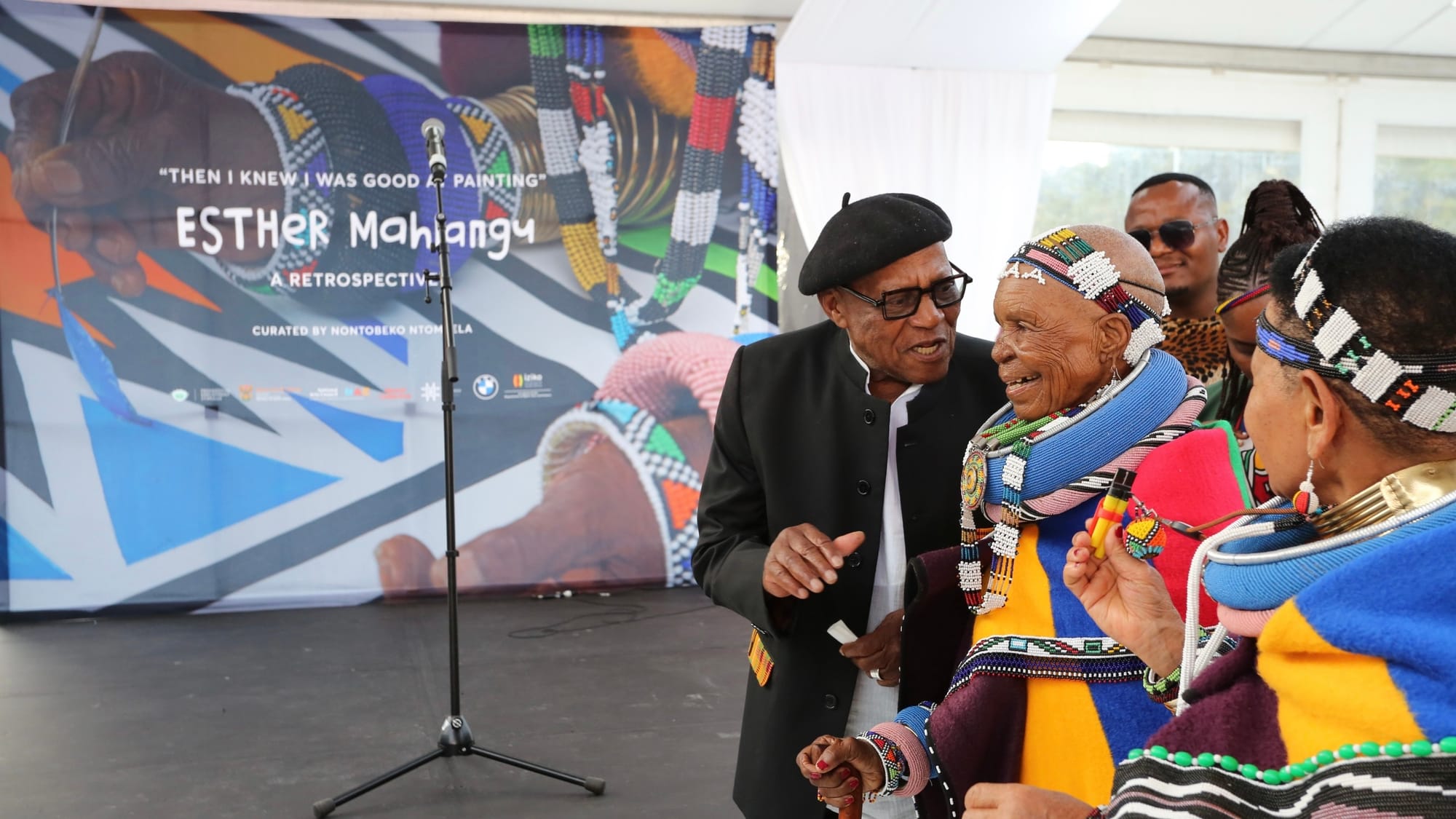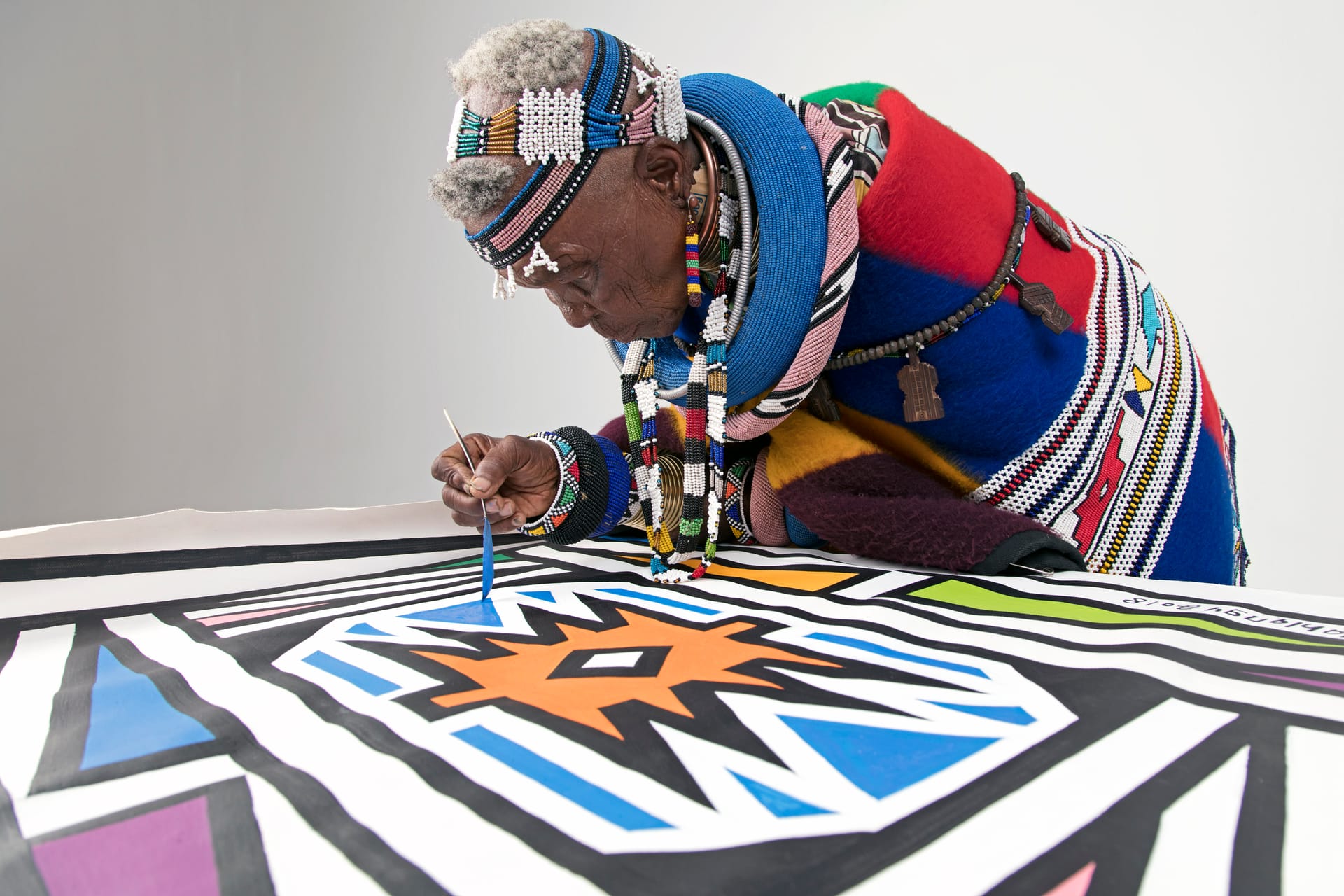Art is defined as a diverse range of human activity and its resulting product that involves creative or imaginative talent generally expressive of technical proficiency, beauty, emotional power, or conceptual ideas. The art of Ndebele house painting stands as a colossal testament of this definition, and as testament to ancient knowledge and architectural prowess the African women of the Ndebele possess. This custom is traditionally performed by the women of the community, transmitted from one generation to the next.
The women of the Ndebele tribe, in South Africa paint their home walls with chicken feathers to create rare vibrant geometric patterns and bright colours that result into an intricate design. The paintings are made with clay and cow dung which is then applied like paint. Their compositions without the help of preliminary drawings or a ruler for straight lines, painting freehand with incredible precision are impeccable and stunning.
To them, to paint is an opportunity to express themselves, where each house’s design has its meaning and story to tell. With elaborately painted patterns and graphic elements composed of rectangle, triangle, chevron and diamond shapes they capture and document important life events such as a birth, death, wedding or a boy heading off to initiation school. Most of these women don’t know how to read or write, have never attended school.
Mme Esther Mahlangu comes from that heritage of those Ndebele woman, her artwork has allowed this tradition to evolve into a contemporary form that resonates with art markets worldwide. Her artwork is not merely a personal expression; it is a testament to the collective memory of her people. Today the Ndebele artwork is at the forefront of contemporary African art with global appeal.

Mme Mahlangu’s art pieces have collected incredible prices amounts at auctions, further testament to her global appeal. In 2020, one of her works, a brilliant ensemble of Ndebele symbols titled “African Symphony,” was auctioned at Sotheby’s for a record-breaking $141,000 (ZAR 2 536 699,98), setting a personal record for the artist. This was Mme Mahlangu highest record her artwork in the international markets.
In 2024, Unisa conferred the Doctor of Philosophy (Honoris Causa) to Mme Mahlangu in recognition of the profound mathematical principles embedded in her breathtaking and mesmerizing artwork. Unisa Journalist Godfrey Madibane writes as follows….
Mahlangu's vibrant geometric patterns and intricate designs are not just visually stunning; they embody a profound understanding of symmetry, repetition, and spatial relationships. The university acknowledged her work as a unique blend of artistic expression and mathematical brilliance. The recognition not only celebrates Mahlangu's artistic legacy but also challenges traditional perspectives on the intersection of art and mathematics.
Wow!!! This to me is a testament to the role and importance of traditions and rites of passage, she cites her mother and grandmother as her primary influences, crediting them with introducing her to the traditional Ndebele painting techniques and the cultural significance they carry.
To me, Mme Mahlangu’s achievements and recognition is awakening moment to imagine what could happen if Africans fully value and embrace their cultures, traditions, customs and practices.
To be decolonial, I would look at Mme Mahlangu’s achievements and recognition in the other way round, I believe the symmetry, repetition, and spatial relationships in mathematics embodies the inspiration from ancient African knowledges, possessed by our ancestors that came thousands of years before time.
She has, and always been a doctor.
What are your thoughts?




